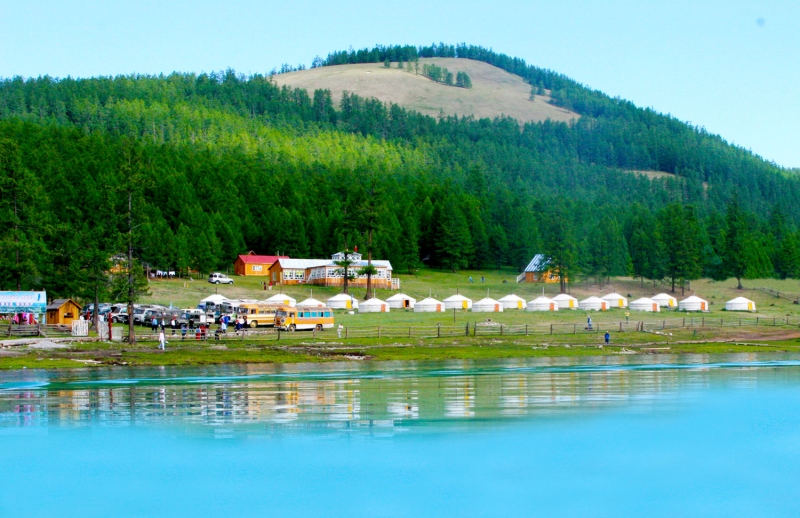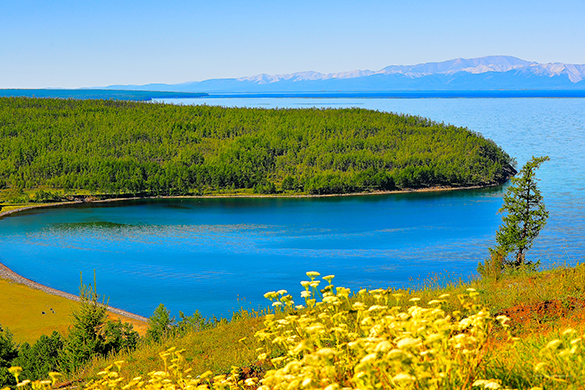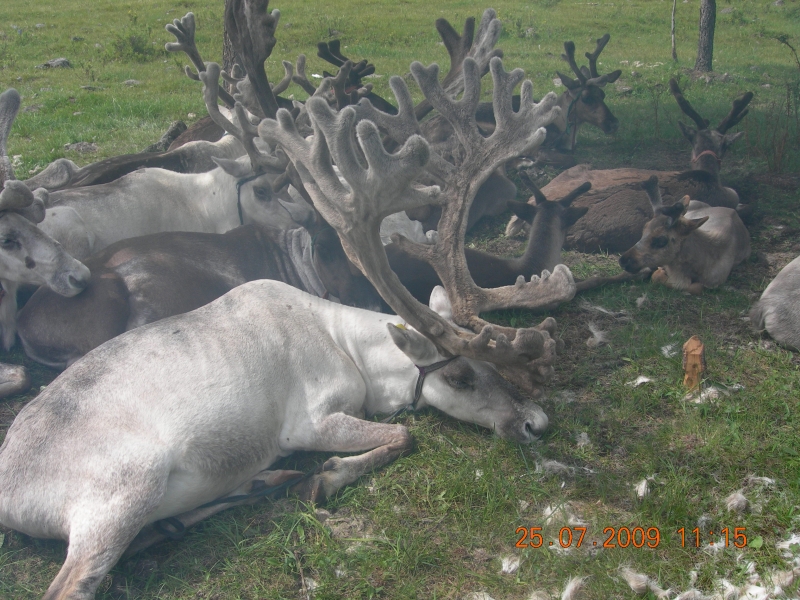Khuvsgul Lake
Khuvsgul Lake
Khuvsgul Lake is located in the northwest of Mongolia near the border to Russia, at the foot of the eastern Sayan Mountains. It is 1,645 m above sea level, 136 km long and 262 m deep. It is the second-most voluminous freshwater lake in Asia, and holds almost 70% of Mongolia's fresh water and 0.4% of all the fresh water in the world. Its watershed is relatively small, and it only has small tributaries. It gets drained at the south end by the Egiin Gol, which connects to the Selenge and ultimately into Lake Baikal. In between, the water travels a distance of more than 1,000 km, and a height difference of 1,169 m, although the line-of-sight distance is only about 200 km. Its location in northern Mongolia helps form the southern border of the great Siberian taiga forest, of which the dominant tree is the Siberian Larch. The lake is surrounded by several mountain ranges. The highest mountain is the Burenkhaan / Munkh Saridag (3,492 m), which has its peak north of the lake exactly on the Russian-Mongolian border. The surface of the lake freezes over completely in winter. It's inhabited by nine species of fish including the Siberian grayling, sturgeon and lenok and the area is rich with various species of flora and fauna. And the area is home to argali sheep, ibex, bear, sable, moose and wolves. The region hosts three separate, unique peoples: Darkhad, Buriat and Tsaatan. Shamanism, rather than Buddhism, is the religion of choice in these parts.





